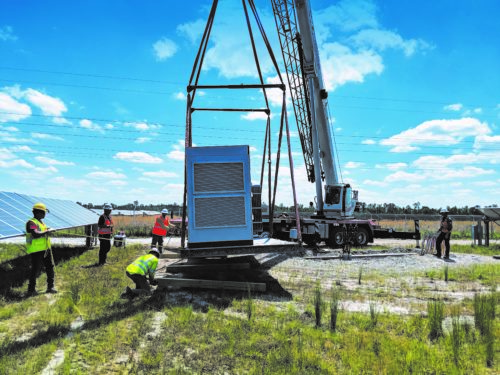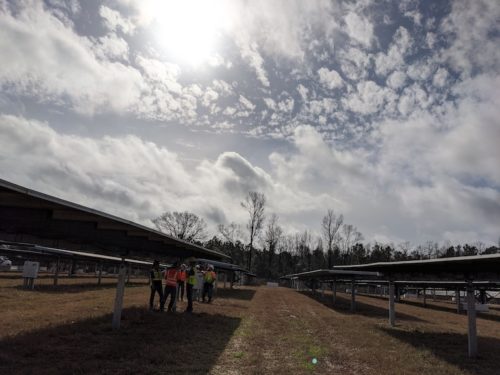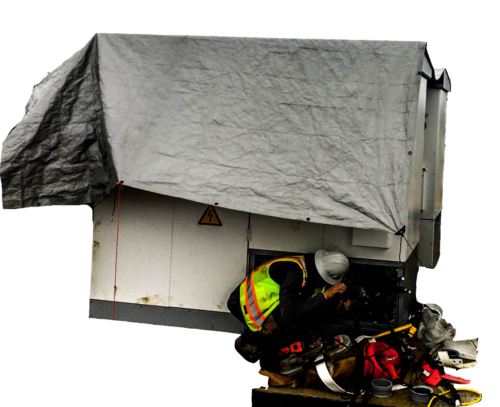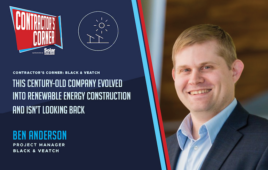By Auston Taber, CEO, Solar Support, and Clifford Myers, PE, Director of Restoration, DEPCOM Power
Climate change is causing more severe weather events across the country and solar projects are often in the crosshairs. Sandstorms jam debris particles into delicate equipment. Storm surges flood rows of inverters. Tornadoes rip apart racking systems. Wildfires whip across sites, melting wires and cables. Structural assets built to last three decades can be mangled beyond recognition within an hour.
What’s an asset owner to do when a natural disaster strikes a solar project?
1. Assess and regroup: How bad is it?
There are four levels of damage to consider:
- Complete destruction: Nothing is operational. There is no way to generate power from any part of the plant without significant remediation.
- Partial destruction: Anywhere from 15% to half of the site is offline. The rest may be operational, but balancing repairs elsewhere may require shutting down undamaged sections over time.
- Minor damage: Roughly 10% of the site has been affected. There might be a few central inverters offline and some tracker rows may be damaged, but the site can produce power and perform.
- Site intact with some production issues: One or more inverters are offline, but the overall site is generating power.
2. Perform a top-to-bottom evaluation
Initial impressions can be misleading. Even if only a single inverter has gone offline, it pays to walk each row and document every part that’s damaged. Take at least four or five pictures of everything that will require attention. Note serial numbers if you can. Keep track of all information in a spreadsheet or app and keep adding information as the remediation project continues.
Yes, it’s time consuming, but you don’t want to make multiple site visits or, worse, discover hidden damage after you’ve started remediation work. It’s critical to know what to expect before inviting contractors to provide repair estimates. Thorough initial documentation will help stave off change orders later.
For sites with more extensive damage, a grid-by-grid drone flyover can help map the level of destruction. It’s common for insurance companies to cover drone inspections because they want to know the scope of damage as much as you. Get both standard and infrared views of the entire site; thermal problems invisible to the naked eye show up in infrared photos.
3. Bring in experts
Because site restoration can be complex, consider bringing in an engineering firm with solid restoration experience early in the process. Experts who have already dealt with natural disaster or storm damage can help with initial inspections and documentation to give you a head start on subjective decisions about what needs to be replaced and what may be salvageable.
With many solar component manufacturers going out of business, an engineering partner can help determine which equipment may be obsolete or find replacement parts.
These types of decisions are what makes recovering from extreme weather events radically different than building a new solar plant. Solar contractors that excel at building new sites may have never had to retool damaged components or work around partially functioning systems. An experienced engineering firm can get your restoration pointed in the right direction from the get-go.
4. Determine salvage vs. replacement
To determine what components can be salvaged and what needs replaced, first test damaged equipment and establish criteria about what conditions warrant repair and what mandates replacement. Flexibility is key; you don’t want to make matters worse, but you also don’t want to miss an opportunity to continue using viable parts.
In one case, a tornado had ripped off an older inverter’s top and side panel. Although initially the asset owner and inverter manufacturer agreed that the entire inverter would need to be replaced, upon further inspection the Solar Support team presented a plan to re-energize the equipment. It worked. Instead of spending over $200,000 to replace the power conversion station, the O&M team was able to repair the damaged enclosure at minimal cost.
5. Ask for bids and choose contractors
Come up with a rough idea of the cost of repairs before asking for bids using early documentation and assessment. Tell contractors what you already know so they can substantiate any additional work that may factor into their quote.
Be sure that bids take into account dismantling damaged parts of the site before reconstruction can take place. While putting in a new tracker row may cost a given amount initially, contractors also need to factor in deconstruction of what’s already there and determining what materials can be salvaged.
And that’s just for the structural piece of the project. Matching new electrical parameters to preexisting designs can also be a huge undertaking. For example, nearly a decade ago, most sites were 600-V systems, but new plants today are 1,000-V or 1,500-V systems. There are few solutions to go backward to 600 V during remediation — and that can mean vastly different bids for repair or replacement.
That’s why it’s important to do your own estimates ahead of time. If the bids you receive aren’t in line with what you expected, go back to your documentation and try to determine why that is. Has the contractor identified something you missed? If the bid is far lower than you anticipated, take a closer look too. Beware of the cheapest bid, because it’s likely that company doesn’t understand the full scope of the work involved. That can mean costly change orders later — the bane of any restoration project.
6. Work with insurance companies
Remember that insurers will want to vet contractors. They want to see rapid progress toward repairs — particularly if they’re paying lost production damages — but they also want to see extensive validation to justify those bids.
This is where a full-scope general contractor can be invaluable. An umbrella company can be responsible for the myriad subcontractors required to restore a damaged PV plant. A general contractor that specializes in doing PV plant restoration work manages everything, including holding all required licenses, coordinating the work schedule, overseeing every aspect of the repair work, handling the project’s extensive documentation and interacting with insurers throughout the process. This can be the difference between collecting your full insurance claim and incurring substantial losses due to unforeseen delays.
An insurer will have its own vendors tracking the project, such as subrogation and investigations teams. Although asset managers may work directly with an insurance adjuster, contractors are more likely to communicate through a third party hired to assist the adjuster. Different documentation may be required at every level of the claims process, which will be reviewed by parties with varying degrees of technical understanding. Keep your documentation clear for laypersons.
Restoring damaged utility-scale solar projects can be a complex process that requires organization and specific expertise. Following these six steps will get solar projects back up and running after severe weather events, while limiting expensive downtime for asset owners.
Read Part 2 for more tips on getting solar projects back up and running after natural disasters.
Auston Taber has spent nearly 15 years in the solar industry across various technical and service roles, offering deep expertise in PV equipment and site O&M across residential, C&I and utility environments. Auston’s experience resolving complex inverter and plant O&M issues spans leadership roles across customer service, safety and training with companies such as SMA, Huawei and Ginlong Technologies. In founding Solar Support, Auston combines equipment repair, component supply and plant restoration to rebuild utility-scale systems while minimizing losses for investors.
Clifford Myers, a Navy Veteran, drives restoration excellence, bringing his expertise in solar systems fault resolution and performance optimization to DEPCOM Power. With over 14 years combined experience in utility PV technology and power conversion systems, Cliff steers the company’s restoration, repowering and recertification strategies. Cliff graduated Magna Cum Laude from Arizona State University with a Bachelor of Science in Electrical Engineering. Cliff is also the co-founder of Solar Support.








As the solar PV industry expands into more and more local micro-grids, individual business systems and residential systems, this will become more important on a smaller scale with the potential of larger regional failures in city and rural areas during severe storm conditions.
At the utility scale level, one might also have energy storage on site. (IF) the PPA with the local utility is for grid services also, then an undamaged ESS might allow some operations providing utility scale grid services, while one replaces damaged panels, and inverters.